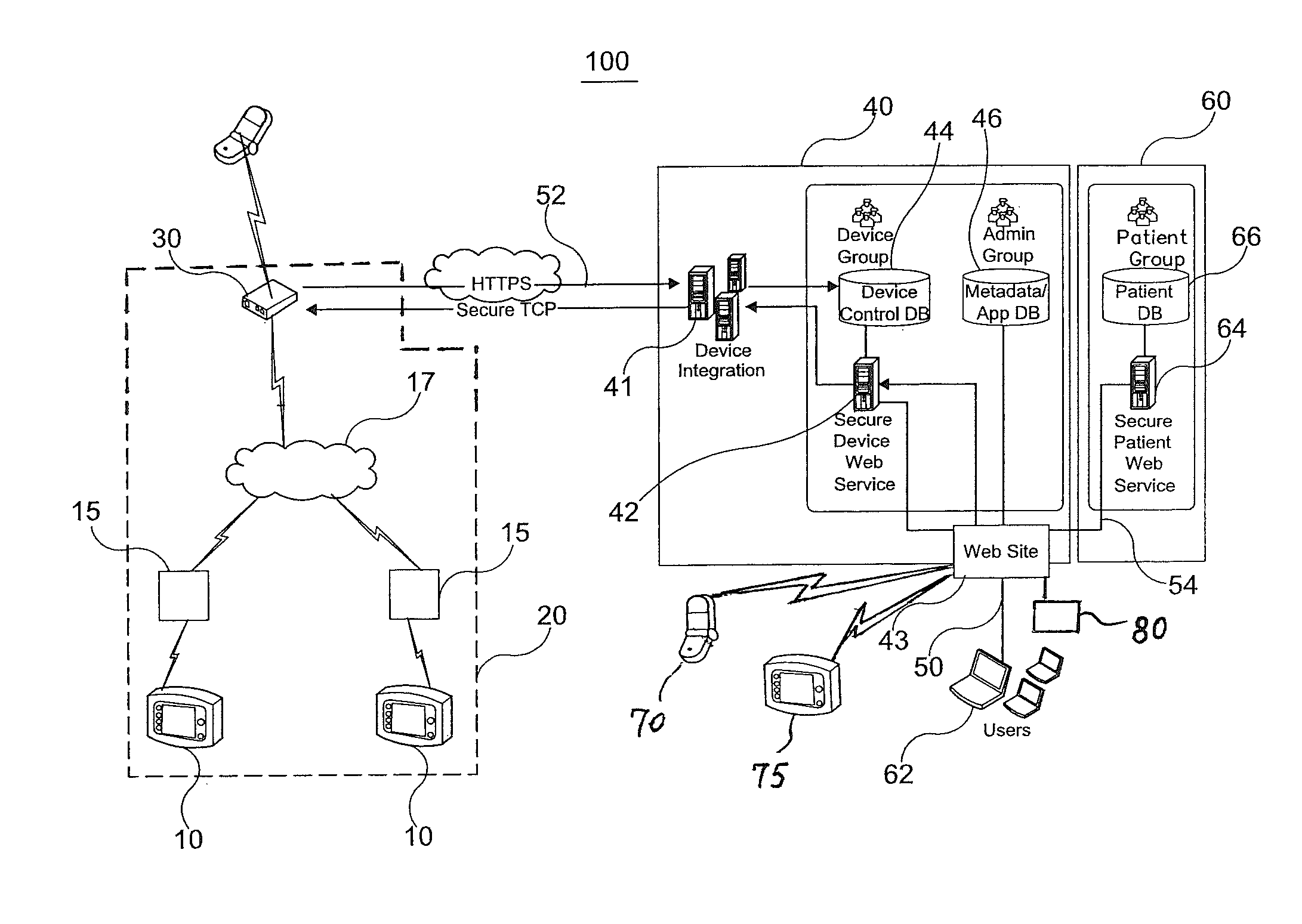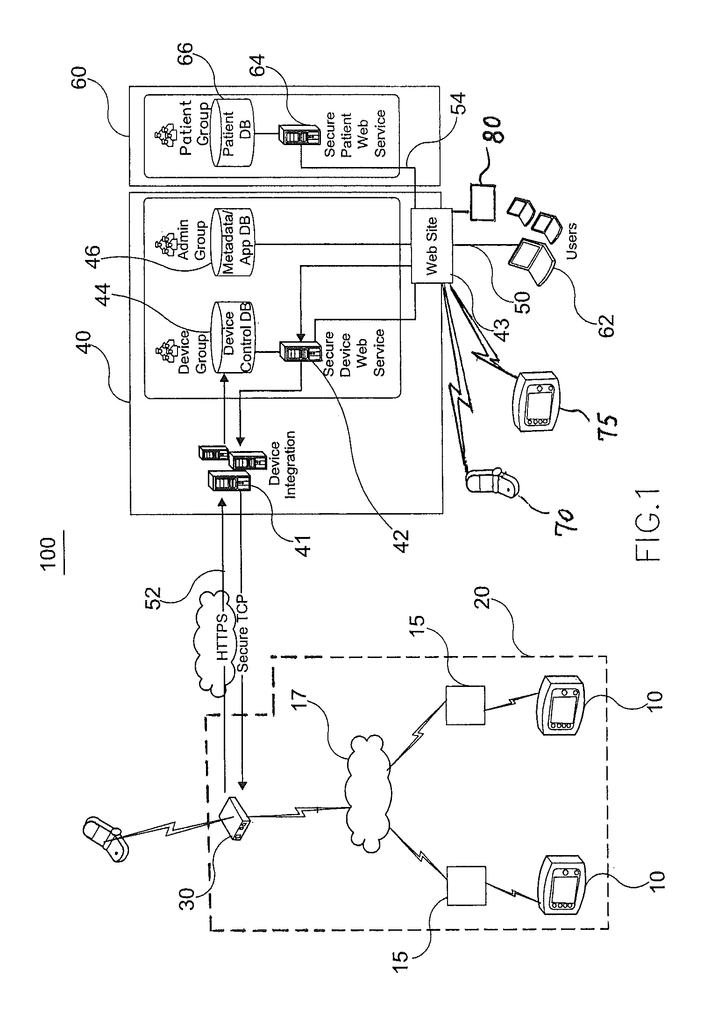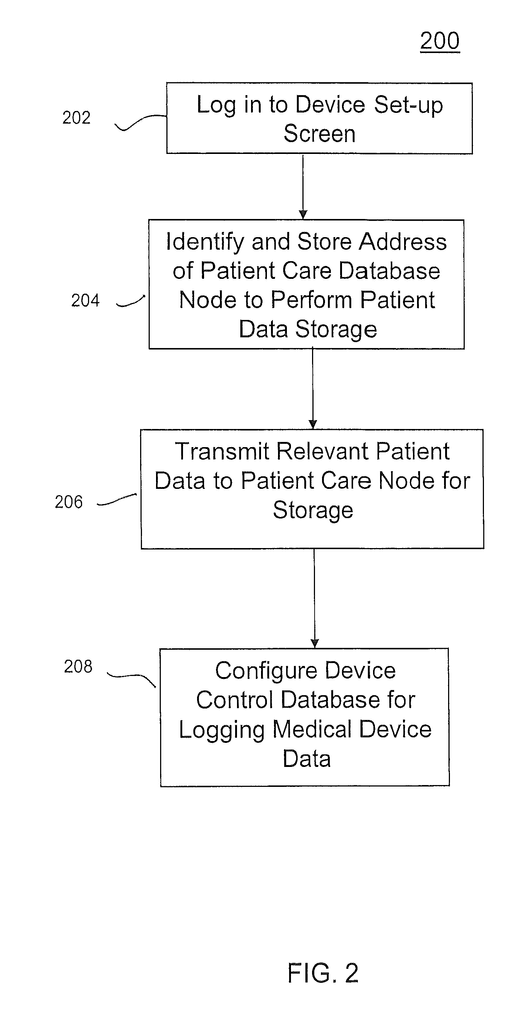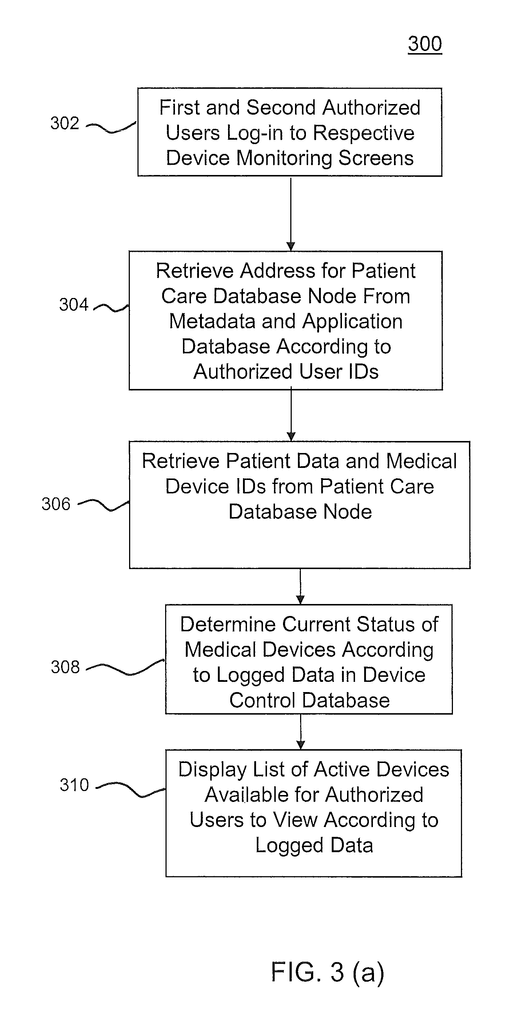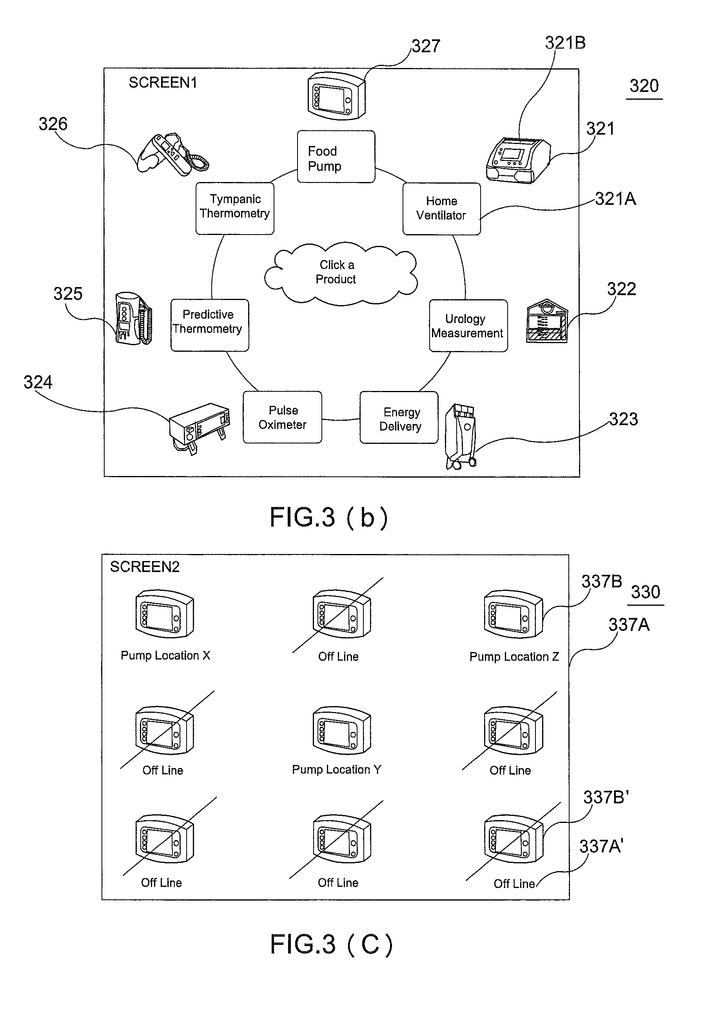Invented by Stacey B. Harrington, Joel D. Wiesner, KPR US LLC
Remote monitoring systems and methods for medical devices refer to technologies that allow healthcare providers to monitor patients remotely. These systems can be used to monitor a wide range of medical devices, including blood glucose monitors, blood pressure monitors, and heart rate monitors. Remote monitoring systems can be used to monitor patients in real-time, allowing healthcare providers to detect changes in a patient’s condition and respond quickly.
One of the main benefits of remote monitoring systems and methods for medical devices is that they allow healthcare providers to monitor patients remotely. This can be particularly useful for patients who live in remote areas or who have mobility issues. Remote monitoring systems can also be used to monitor patients who are at high risk of developing complications, such as patients with diabetes or heart disease.
Another benefit of remote monitoring systems and methods for medical devices is that they can help healthcare providers to reduce healthcare costs. By monitoring patients remotely, healthcare providers can reduce the need for in-person visits and hospitalizations. This can help to reduce healthcare costs and improve patient outcomes.
However, there are also some challenges associated with remote monitoring systems and methods for medical devices. One of the main challenges is ensuring the security and privacy of patient data. Healthcare providers must ensure that patient data is kept secure and that patient privacy is protected.
Another challenge is ensuring that remote monitoring systems are easy to use and accessible to all patients. Some patients may have difficulty using remote monitoring systems, particularly if they are not familiar with technology. Healthcare providers must ensure that remote monitoring systems are easy to use and accessible to all patients.
Despite these challenges, the market for remote monitoring systems and methods for medical devices is expected to grow significantly in the coming years. The rise of telemedicine and the need for remote patient monitoring are expected to drive the growth of this market. In addition, advances in technology are expected to make remote monitoring systems more accessible and easier to use.
In conclusion, remote monitoring systems and methods for medical devices are an important technology that can help healthcare providers to monitor patients remotely. While there are some challenges associated with these systems, the benefits are significant. As the market for remote monitoring systems and methods for medical devices continues to grow, we can expect to see more advances in this technology and more patients benefiting from remote monitoring.
The KPR US LLC invention works as follows
A remote monitoring system to monitor a number of medical devices in a patient’s care or home-care facility. The system includes a wireless relay module in communication with a device integration servers for receiving data packets sent by medical devices, including identifiers and data. The system includes a web server that is outbound. The web server can display webpages with data from medical devices on the first and second remote monitor devices after authentication of a data request.
Background for Remote Monitoring Systems and Methods for Medical Devices
In critical care and home health service centers such as hospitals, clinics and assisted living centers, the time spent by care providers with patients is very important. Care givers’ response times to important health conditions and events are also critical. To better manage the time of care providers and patient interaction, systems of centralized monitoring were developed. These systems transmit physiological data about each patient to a central location. A single technician or a small group of technicians will monitor this information at the centralized location to determine patient status. The technicians or system will communicate with local caregivers via pagers, cell phones and/or wireless pagers if there is a patient alarm.
Implementing such centralized monitoring systems via wireless networks can present some difficulties. It would be possible to monitor patient status using information from a variety medical devices. These devices could be dynamically assigned to patients in different rooms or floors. This is why it would be beneficial to establish communication between the medical devices with the central location via a local area network, such as a Wi-Fi. IEEE 802.11 standards. These networks are often already in place in facilities to support many other functions, such as physician access to EMRs, facility administrative systems, and other functions. It is not always possible to obtain sufficient local network access for the purpose centralized monitoring. Access to WiFi networks and traditional local area networks may not be available or reliable enough to support critical care monitoring applications when the patient is far from a critical health care center.
It may be beneficial to have a single “off-site” monitoring location for critical care and home health care centers. centralized monitoring location for monitoring several geographically-dispersed critical care health service centers.
As an alternative to IEEE 801.11 or WiFi-based local area network, ZIGBEE-based networks for wireless personal area networking have been used to collect information from a wide variety of medical devices, in accordance IEEE 11073 Device Specifications for point-of care medical device communication. These include, for example, pulse oximeters. blood pressure monitors. pulse monitors. weight scales. and glucose meters. ZIGBEE Wireless Sensor Applications For Health, Wellness and Fitness, The ZIGBEE Alliance, Mar. 2009, is incorporated herein by reference in its entirety. ZIGBEE networks have the advantage that they can be dynamically configured, such as in “self-healing” configurations. Mesh configurations and low-power operation (enabling ZIGBEE transceivers, for example to be integrally connected to medical devices on battery power) are two of the advantages ZIGBEE networks offer over current IEEE 802.15.1 Bluetooth wireless personal area networks. Transmission ranges are limited between ZIGBEE transceivers to a maximum of several hundred feet. These networks are therefore suitable for communication with medical devices on-site, but not for monitoring off-site.
Therefore a hybrid system can be used in which one of more wireless personal area network is configured to facilitate communications on-site between medical devices and wireless relay modules, which are then configured to communicate with centralized monitoring systems off-site (for example via a Wireless Wide-Area Network (WWAN), such as a cellular data network based on the Global System for Mobile Communications(GSM) or Code Division Multiple Access(CDMA) cellular networks or associated wireless channels). The related patent application entitled “Wireless Relay Modul for Remote Monitoring Systems” describes a wireless relay module as well as a system. U.S. Application Ser. No. No. 13/006,769 filed on Jan. 14, 2011, and entitled?Medical Device Wireless Network Architectures? U.S. application No. No. No.
In compliance with the applicable patient data privacy provisions of Health Insurance Portability and Accountability Act of 1995 (HIPAA), information between monitored medical devices and the central location must be done securely. The medical device and associated patient information must only be accessible to those who have the right access credentials. The centralized monitoring system must be able to recognize medical device information and reach those personnel on-site to notify them of the alert condition.
The centralized system would also be able to configure medical devices according to associations with individual sites and patients, log communications from medical devices, display medical device data for users of the centralized system who are able provide sufficient credentials, and recognize medical device alert conditions in a timely manner. The centralized system would also be able to configure medical devices based on their associations with specific sites and patients. It could log communications from medical equipment, display medical device data for users who have the necessary credentials and recognize medical device alert situations and report these conditions in a timely manner.
The present invention is directed at a remote monitoring method and system for monitoring a plurality medical devices that are located remotely from a monitoring system in a patient care or a home care facility. According to one embodiment of the present invention, one or several medical devices are provided in a patient’s care or home-care facility. These include, but are not limited, to respirators and enteral feeding devices. Each medical device is equipped with an interface circuit that is configured to communicate via a wireless network with any of the plurality of wireless relay modules. Wireless relay modules can also communicate with remote monitoring devices over a wireless communication network that is internet accessible, and more preferably a wireless wide area network (WWAN), such as a cellular network based on Global System for Mobile Communications or Code Division Multiple Access. For example, to comply with HIPAA regulations on communications, each wireless network is preferably secured.
The remote monitoring method and system includes a device-integration server that is in communication with wireless relay modules to receive data packets, including information from medical devices. The information may include the identification of a medical device associated with it and/or data from that device. It is preferably transmitted in a secure manner, such as by complying with HIPAA privacy provisions. The information may also include encrypted or securely transmitted patient identification data, which may be coded unencrypted to avoid any reference of the patient’s name.
The remote monitor system also includes a database control system, a secure web server for medical devices and a device management system. It also has an outbound server. The data management system logs information that is provided to the device server integration regarding the medical devices. Outbound web server, also known as “web server”, is configured to provide webpages including the data of medical devices for display on a first and second remote monitoring devices. The outbound web server (also referred to as?web server? herein) can be configured to display webpages containing data from medical devices on first and second remote monitor devices upon authentication of a data request that originates from the monitoring device. The second monitoring device can be used by a relative, such as a caregiver, parent or nurse who is located near or far from the patient.
We will now refer in detail to the exemplary embodiments and the best methods of carrying out the invention. The accompanying drawings show examples of these exemplary embodiments. Although the invention is described with these embodiments in mind, it should be understood that the invention does not limit itself to those embodiments. The invention does not limit itself to the described embodiments. It is intended to include all modifications and equivalents that fall within the scope and spirit of the invention, as set forth in the appended claims.
The following description provides a detailed understanding of the invention. You can practice the present invention without any or all of these details. Other well-known aspects are not described in detail to avoid confusing the invention.
Fig. 1 illustrates the invention. 1-6.
In this specification, and the appended claims the singular forms?a? ?an,? ?an,? Unless the context requires otherwise, plural references are allowed. All technical and scientific terms are understood as they are by one of ordinary skill in art.
FIG. “A diagram of a exemplary system 100 to monitor medical devices according to the present invention is shown in FIG. 1. One or more medical devices 10, for example, are available at a patient’s facility 20 to monitor the medical condition of one or several patients and/or administer medical treatment. The patient facility 20 can be a critical-care health service center, such as hospitals, clinics and assisted living centers, that serves a large number of patients. It could also be a home for one or more patients or a personal enclosure, like a backpack, which is worn or attached by an ambulatory person. Medical devices can include, for example, ventilators and urology devices. They may also include energy delivery devices such as pulse oximeters or tympanic temperature meters, patient electrodes or food pumps.
Associated with each medical device 10, is an interface circuit 15. This includes a transceiver that has one or more transmitters and/or receivers for transmitting and receiving respective signals in a facility oriented wireless network 17, such as for example a Low Rate Wireless Personal Area Networks (LR-WPAN). ZIGBEE or other low-power personal areas networks such as low power Bluetooth, are currently under development or considered. Houda, Labiod, and others, Wi-Fi Bluetooth Zigbee WiMax, Springer 2010 which is incorporated herein by reference in its entirety. According to the present invention, interface circuit 15 can be located either within medical device 10 or externally.
The patient facility 20 also includes one or more relay module 30. Each relay module 30 has a first transceiver that receives signals from the interface circuits 15, and transmits signals to them, in the facility-oriented Wireless Network 17. It also includes a second transmitter for wirelessly transmitting and receiving signals via an access point 40 through a wireless wide area network (?WWAN?) 52. For example, WWANs suitable for use with this invention include networks based on the Global System for Mobile Communications(GSM) or Code Division Multiple Access(CDMA) cellular networks or those associated with 2G,3G,3G Long Term Development,4G,WiMAX wireless cellular standards of the International Telecommunication Union Radiocommunication Sector. Vijay Garg’s Wireless Communications & Networking Morgan Kaufmann 2007 is incorporated herein by reference in its entirety. To comply with HIPAA regulations communications over the facility-oriented network wireless and WWAN should be conducted securely, using, for instance, a Secure Sockets Layer protocol (SSL), a Transport Layer Security protocol (TLS), or other cryptographic protocol.
As shown in FIG. The access point 40 that can be used with the invention has an inbound server. The device integration server 41 incorporates, or has access to, a transceiver that allows it to communicate with the relay modules 30, over the WWAN. The device integration server 41 forwards the medical device data, the medical device identifier and/or the patient identifier it receives over the WWAN to a secure web server 42. This server is configured, for example, to log the data received in conjunction with the identification information for the associated medical devices into a device control databases 44. ?Medical device data? “Medical device data” is defined as: “Data from or about a medical device, including, but not limited to, data such as medical device identification or software, settings or status (including alarm information or alarm priority), patient information, personal identification numbers of patients, or PINs, prescriptions for patients, or patient medical or physiological data, as collected, produced or generated by the device or device.
An outbound Web server 43 is configured to, for example receive and qualify data retrieval request submitted by first remote monitoring device 62 via a wide-band network 50 (for instance, the Internet) and/or second remotely monitoring devices 70,75 via a wired or a wireless wide-area network. Such requests are best made in encrypted format. For example, suitable encryption formats for such requests could include formats that comply with HIPAA regulations. The outbound web servers 43 retrieves associated data from the secure device database 42 via the secure device server 42. It also requests program data from the metadata and applications databases 46 to construct a display page. Finally, it requests patient data from the patient database 66 located in the patient care database node (60) via a secured link 54 and a secure web server 64. The secure link 54 may be implemented as another WWAN, using the SSL or TLS protocols. By separating patient data from medical device data, which will be stored and managed separately by the patient care database 60 and access point node 40, certain economies can be achieved.
In this case, a third-party service provider could host the access points 40 in order to support multiple patient care and/or home facilities. This would eliminate the need for these facilities to configure their own private facilities for access points and provide hosting services to each facility at a cost that is likely to be far lower than the costs associated with configuring and maintaining dedicated facilities for access points by each care facility provider. The present invention allows for the integration of access point 40 with patient care database 60 into a single node or access point (for example by a large facility monitoring hundreds or thousands patients). As described further herein, in either case the outbound server 43 allows authenticated clinicians to retrieve data on patients and medical devices from the patient care node node 60 or the access node 40. This is done in a transparent and convenient manner, so that the configuration and operation of each access point and patient database node are not of concern to the clinicians.
The first remote monitoring devices are designed to be used by healthcare professionals such as clinicians, doctors, technicians, nurses, and other healthcare specialists who monitor patients using medical devices 10. First remote monitoring devices 62 can include desktop or laptop computers or tablets, smart phones or other mobile devices, or any other display device, fixed or portable. Second remote monitoring devices 70 and 75 can be useful for caregivers, relatives, such as parents who are located near the patient, such as at home or in a small healthcare facility. They may also be used by nurses working in larger healthcare facilities such as hospitals. Second remote monitoring devices 70 and 75 can also include desktop or laptop computers or tablets, mobile phones or smart phones or other communication devices.
Click here to view the patent on Google Patents.
